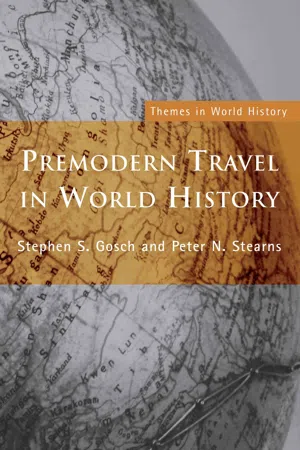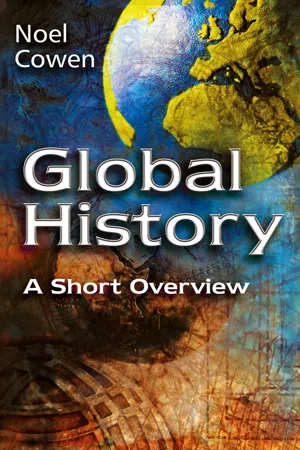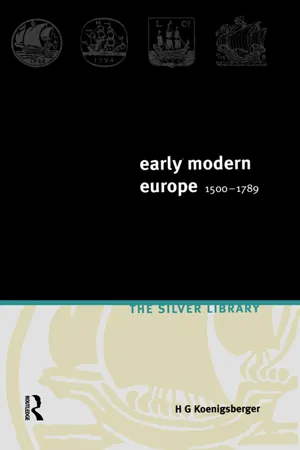History
Post Classical Era
The Post Classical Era, also known as the Medieval Period, refers to the time between the fall of the Western Roman Empire and the beginning of the Renaissance. It was characterized by the spread of Islam, the rise of feudalism in Europe, and the flourishing of trade along the Silk Road. This era saw the development of new political, economic, and cultural systems that laid the foundation for the modern world.
Written by Perlego with AI-assistance
Related key terms
4 Key excerpts on "Post Classical Era"
- eBook - ePub
- Stephen Gosch, Peter Stearns(Authors)
- 2007(Publication Date)
- Routledge(Publisher)
Part IIThe post-classical periodTravel in the centuries after about 500 CE took on new dimensions, compared to its counterpart in the classical period. The most heroic individual travelers now covered longer distances, contacting even more diverse societies. The rate of travel increased. Travel also began to generate more significant consequences, particularly in supporting new trade contacts and the spread of world religions. Travel indeed became an integral part of an accelerating network of contacts among Asia, Africa, and Europe.Several factors account for the changing dimensions of travel. The advent of new religions, notably Islam, or growing interest in other religions such as Christianity and Buddhism was crucial. As religion became less localized, travelers could gain a sense of divine support even as they penetrated far-flung lands. They could also find fellow believers, even in very different cultural and political settings, who would help them in their journeys and provide some familiarity amid strangeness. Religion also provided a new motivation for travel, to promote conversion or to seek contact with the wellsprings of faith in distant places.Political change could be crucial. New or revived empires—the Arab caliphate, the reestablishment of empire in China—provided political protection for travelers across considerable geographic space. The interlocking Mongol empires, toward the end of the post-classical period, promoted security and offered explicit invitation to travelers over an unprecedented range of territory.Technology would enter in as well, though partly as a result of travel and trade. New ship designs, particularly by the Arabs, encouraged wider use of the Indian Ocean. New navigational devices would enter in toward the end of the period, headed by the compass. Travel and trade, particularly initially from Islamic lands, provided maps of unprecedented accuracy as well, another result of travel that could promote further travel in turn. Finally, as we will see, the increased output of travelers’ accounts provided both motivation and knowledge for other ventures, as travel began to feed on itself. - eBook - ePub
Global History
A Short Overview
- Noel Cowen(Author)
- 2013(Publication Date)
- Polity(Publisher)
The belief patterns now became the dominant factor, drawing into their own ambit the surviving political processes and using for their promotion whatever advances in economic processes were available and appropriate. Outstanding among these were materials and methods to increase the reach and permanence of written records and to provide impressive structures where the approved doctrines could be expounded and approved rituals consecrated. Surviving political elites manoeuvred to participate in the content and the control of the now dominant ideological factor. As their rivalries came to be mirrored in the competing sects and schisms of the aspiring religious organizations, a mood of profound searching became endemic across the regions of fading imperial rule.In the centuries following the crisis of belief the religious movements reorganized and regrouped under their own authority, strengthened by their core commitments as they assumed the care of their congregations and provided guidance and intellectual resources across the abandoned territories of the classical empires.Passage contains an image From Classical to Modern
This survey of the classical era has been constructed around the successive experiences of regional civilized societies, expanding political empires and would-be universalist churches. But how much justification is there for seeing the classical era as a part of global history? And what value is there in the grid of phases and factors in ordering the historical data? Part of the answer to the first question lies in the way the penetration of the global habitat set the scene for developments on a worldwide scale. Sedentism appeared independently at numerous sites, and villages became the norm of settled habitation. From this point the sequences of the settlements began to appear. In terms of the answer to the second question, the understanding of history in terms of the framework of phases and factors, it is apparent that from the beginning of the settlements the human experience centred around three basic community requirements: getting a living, working together and sharing ideas. All of these were always in play, sometimes one and sometimes another taking the lead. - eBook - ePub
- Peter N Stearns(Author)
- 2016(Publication Date)
- Routledge(Publisher)
3 CHILDHOOD IN POSTCLASSICAL WORLD HISTORY The Impact of Religious ChangeAll world historians note several key changes during the centuries between 500 and 1450, after the fall of the classical empires. We do not know how, if at all, some of the key developments affected children and childhood. The decline of the classical empires themselves involved growing instability, raids by nomadic peoples, and significant increase in epidemic disease. We can assume that children suffered in many cases – they were, along with the elderly, the group most vulnerable to death and disease. But we lack details. Late in the postclassical period Mongol invaders conquered many areas, from China to Russia to part of the Middle East, but it is not clear – beyond the bloodshed associated with Mongol warfare – that there was any distinctive Mongol impact on childhood.Three related themes that shaped these centuries unquestionably affected childhood. The spread of missionary religions – religions that came to believe in an obligation to convert peoples across political and cultural boundaries – had the clearest effect. This chapter will focus on the changes the expanding religions introduced, focusing on Buddhism and Islam particularly but with attention also to Christianity. These were the three religions whose expansion helped shape the whole postclassical period, with Islam actually established for the first time in this period. The religions resembled faiths like Hinduism and Judaism in many ways, but they introduced important innovations (collectively, but also through separate features) as well.The following chapter picks up more clearly on the two other dominant themes of the postclassical period, while continuing the discussion of religious change. First, the areas organized as complex societies or civilizations expanded, which meant that new regions gained formal states, law codes, and growing cities, all of which could affect how childhood was defined and managed. Several new areas also began deliberately to imitate more established centers, as with Japanese efforts to import Chinese forms; this, too, could measurably affect childhood. Finally, trade accelerated, including interregional trade. This promoted further urban growth, in new centers but also in established regions such as China, which meant that a larger minority of children were involved with manufacturing and apprenticeship, even though agricultural activities continued to predominate for the majority. Islamic merchants reached out in trade from bases in the Middle East and North Africa, interacting with Europe, central Asia, the whole Indian Ocean basin, and several parts of sub-Saharan Africa. Mongol conquests accelerated trade contacts as well, and the end of the period saw great Chinese commercial voyages for several decades. The spread of civilization, imitation, and mounting trade contributed to a changing framework for childhood in several areas, particularly between the tenth and the fifteenth centuries. - eBook - ePub
- H.G. Koenigsberger(Author)
- 2014(Publication Date)
- Routledge(Publisher)
1 From Medieval to Modern Europe Periodization The humanistsThe Ancient World came to an end with the barbarian invasions. No such dramatic event, or series of events, marked the end of the Middle Ages. The question of the periodization of medieval and modern history has therefore presented historians with formidable problems and there is no complete consensus. The concept of a modern age following on a middle age, or an age in between the Ancient World and modern times, appeared first with the Italian humanist Petrarch, in the fourteenth century. To Petrarch it seemed that the Roman Empire had fallen to the barbarians and that barbarism had continued ever since. Only in his own time Petrarch saw the dawn of a new age.This sleep of forgetfulness will not last for ever. When the darkness has been dispersed, our descendants can come again in the former [i.e. ancient Roman] pure radiance.1What for Petrarch was a glimmer of hope became for his humanist successors of the fifteenth century a scheme, a threefold division of history in which the middle period or Middle Ages was a barbaric and dark age, followed happily now by a brighter, more civilized modern age. This modern age recovered many of the values and achievements pf the ancients and was even adding new achievements of its own. Here was a radically different view from the traditional historical schema, favoured especially by the theologians, of a succession of empires. The theologians differed among themselves as to which these empires were and even more as to when to expect final empires of Antichrist and of Christ, with the Day of Judgment and the end of time.Plate 1.1 Botticelli: Annunciation, 1489–90
Learn about this page
Index pages curate the most relevant extracts from our library of academic textbooks. They’ve been created using an in-house natural language model (NLM), each adding context and meaning to key research topics.



